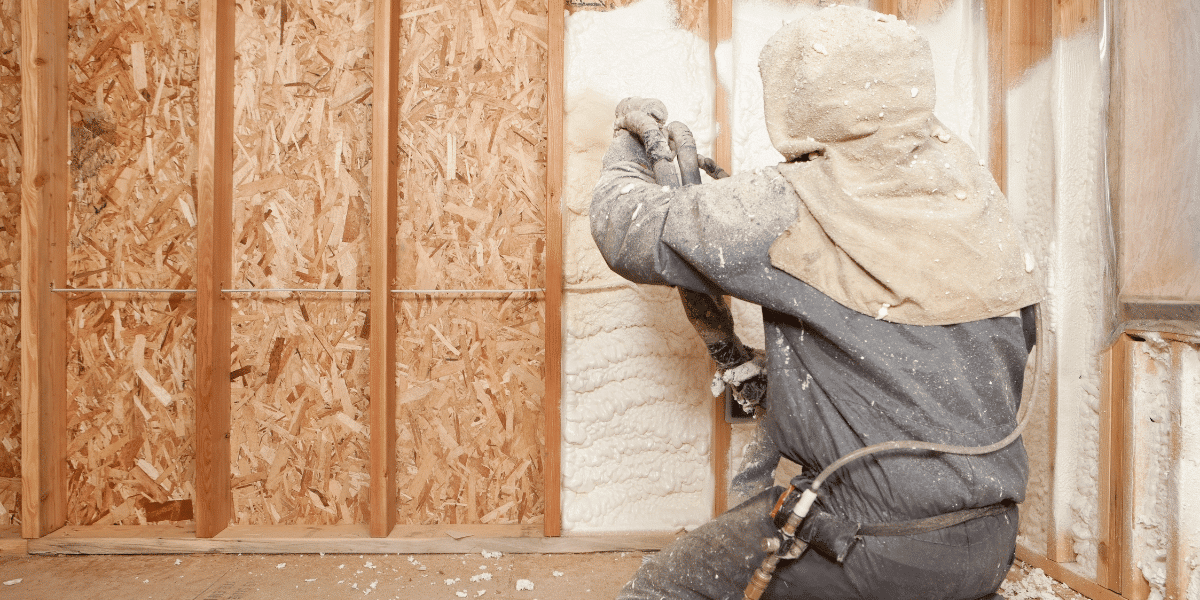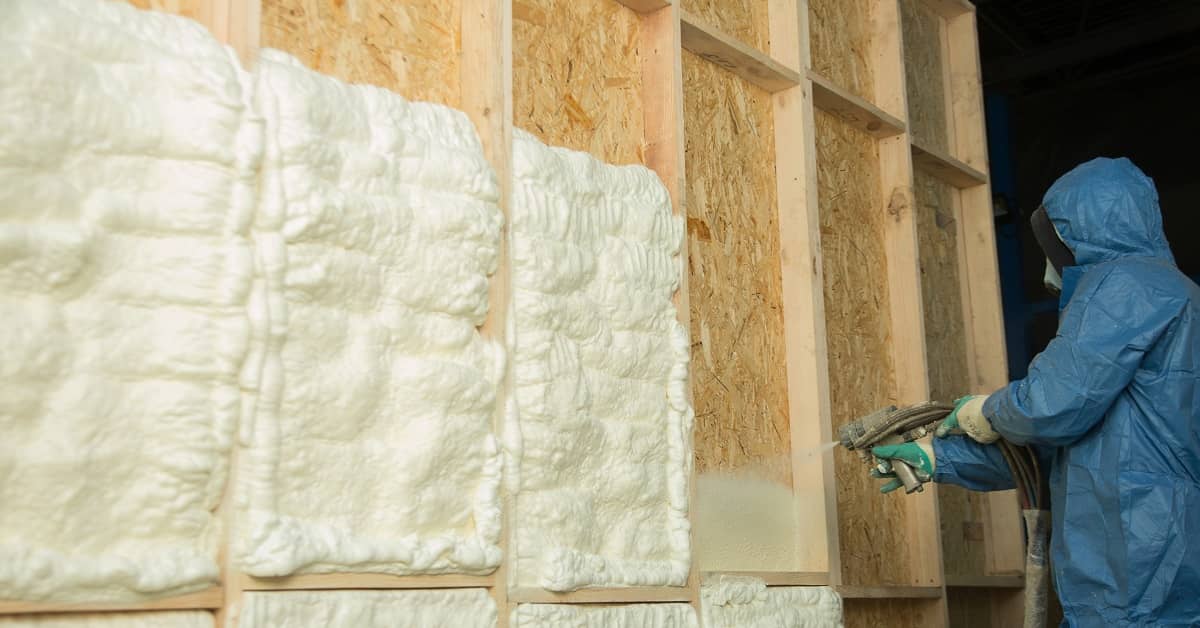Raleigh homeowners can reduce energy bills by 20-40% with proper wall insulation, with spray foam delivering the highest savings (30-40%), followed by fiberglass (15-25%) and cellulose (20-30%). The most effective insulation choice depends on your home's construction, budget, and energy-saving goals, with R-values between R-13 and R-21 recommended for Raleigh's climate zone.
Wall insulation serves as your home's thermal barrier, preventing heat transfer that forces heating and cooling systems to work harder. Modern options balance initial cost with long-term energy savings while addressing Raleigh's humid subtropical climate challenges of hot summers, moderate winters, and high humidity levels.
Wall Insulation Types for Raleigh Homes
Raleigh homeowners have several insulation options, each with unique benefits and applications:
Spray Foam Insulation Benefits
Spray foam creates an air-tight seal that stops both heat transfer and air movement, making it particularly effective in Raleigh's climate. Open-cell spray foam expands to fill cavities and irregular spaces, providing excellent air sealing and sound dampening properties. This makes it well-suited for interior walls where noise reduction is desired along with thermal performance.
Closed-cell spray foam delivers the highest R-value per inch of any insulation option, creating a moisture barrier that's invaluable in Raleigh's humid environment. The dense structure adds structural strength to walls and makes it ideal for areas prone to humidity or moisture exposure. This dual benefit of structural reinforcement and superior insulation makes it popular for both new construction and major renovations.
Bonus Tip: Combining closed-cell spray foam (1-2 inches) with traditional insulation creates a cost-effective hybrid system that maximizes air sealing while maintaining budget control. This approach targets the critical air barrier function where it matters most, while using less expensive materials to build up total R-value.
Traditional Insulation Options
Fiberglass and cellulose remain popular choices due to their lower cost and familiarity. Fiberglass insulation comes in batts designed for standard wall cavities or as a blown-in product for existing walls. Its lower upfront cost makes it accessible for many homeowners, though it requires proper vapor barriers to perform effectively in Raleigh's humid climate. When correctly installed with attention to coverage and air sealing, fiberglass can provide solid thermal performance.
Cellulose insulation, made from recycled paper products, offers excellent value for environmentally conscious homeowners. Its dense installation reduces air movement more effectively than standard fiberglass, and it provides good sound absorption properties. All cellulose products are treated for fire and pest resistance, addressing common homeowner concerns. The material's ability to conform to irregular spaces makes it particularly effective for retrofitting existing homes with minimal disruption.
According to regional market data, over 65% of Raleigh homes built before 2000 have inadequate wall insulation by today's energy standards, representing significant energy-saving potential through upgrades.
Technical Specifications for Wall Insulation
Understanding the technical aspects helps homeowners make informed decisions:
For Raleigh's climate zone (4A), the International Energy Conservation Code recommends minimum wall insulation of R-13 for 2x4 walls and R-19 to R-21 for 2x6 walls in new construction.
Insulation for Existing Walls
Retrofitting insulation into existing walls presents unique challenges and opportunities for Raleigh homeowners seeking energy improvements without major renovations.
Blown-in Solutions
For homes with finished walls, blown-in insulation offers minimal disruption to daily life and home aesthetics. The process involves drilling small holes (1-2 inches) between studs, typically in an inconspicuous pattern. Insulation is then blown into wall cavities using specialized equipment that ensures even distribution and proper density. After installation, the access holes are patched and refinished to match existing wall surfaces. Most homes can be completed in 1-2 days, providing immediate energy efficiency improvements without the cost and disruption of removing and replacing drywall.
Injection Foam
A newer option specifically designed for existing walls, injection foam has revolutionized retrofit insulation projects. This specialized product expands less than traditional spray foam, allowing it to flow around obstacles inside walls without creating excessive pressure that could damage finished surfaces. It cures quickly and effectively fills voids and gaps in existing insulation, creating a comprehensive thermal barrier. The installation process is similar to blown-in insulation but often requires fewer access points, further minimizing wall repairs after installation.
Bonus Tip: Schedule insulation work during mild seasons (spring or fall) when energy demands are lower, and any temporary home exposure will have minimal impact on comfort and energy bills. This timing also allows you to test the insulation's effectiveness during both heating and cooling seasons before extreme weather arrives.
Things to Consider Before Making a Decision
Home Age and Construction
Older Raleigh homes (pre-1980s) often have inadequate wall insulation and may benefit most from upgrades. Wall depth and cavity size vary significantly by construction era, with older homes typically having narrower cavities that limit insulation thickness. The condition of existing insulation is another crucial factor, as degraded materials provide significantly reduced thermal protection. Homes with knob-and-tube wiring require special considerations due to potential heat buildup and safety concerns. Additionally, historically designated homes may have restrictions on modification methods, requiring solutions that preserve architectural integrity while improving energy performance.
Climate Considerations for Raleigh
Raleigh's climate demands insulation that addresses several regional challenges simultaneously. Hot, humid summers create significant cooling demands, while moderate but variable winters require effective heat retention. The region's high annual rainfall and humidity levels mean moisture management is as important as thermal performance. Effective wall insulation for Raleigh needs to prevent both heat gain during summer and heat loss during winter, while managing water vapor to prevent condensation within wall assemblies that could lead to mold or structural damage over time.
Budget vs. Long-Term Savings
DIY vs. Professional Installation
While fiberglass batts can be installed by experienced DIYers, most wall insulation options require professional equipment and expertise. Professional installation ensures proper coverage and density throughout the wall system, with special attention to areas prone to air leakage. Trained technicians understand building science principles and can address potential thermal bridges or moisture issues that might otherwise compromise performance. Professional installation also ensures compliance with local building codes and typically includes manufacturer warranties that protect your investment. For most homeowners, the long-term performance benefits of professional installation outweigh the initial cost savings of DIY approaches, particularly for whole-house projects.
Common Questions About Wall Insulation
When is the Best Time to Insulate Walls?
Wall insulation can be installed year-round, but scheduling during moderate weather (spring/fall) in Raleigh avoids extreme temperature exposure during installation. New construction or renovation projects should include insulation before drywall installation, when wall cavities are accessible and additional air sealing measures can be implemented. For existing homes, any time is better than continuing with inadequate insulation, though planning work during shoulder seasons can minimize comfort disruptions and allow for more thorough inspection of the wall system during installation.
Combining Insulation Types
Hybrid approaches can maximize benefits while controlling costs. A popular combination includes spray foam for air sealing critical junctions and penetrations, with fiberglass fill completing the wall cavity. This approach focuses the premium air-sealing benefits of spray foam where they matter most while using more economical materials for bulk insulation. Another effective strategy uses rigid foam board as an exterior insulation layer during re-siding projects, combined with cavity insulation for a comprehensive thermal envelope. These hybrid systems often deliver performance exceeding the sum of their parts, addressing both conductive and convective heat transfer mechanisms.
Indoor Air Quality Considerations
Proper wall insulation significantly improves indoor air quality through several mechanisms. By reducing air infiltration, insulation limits the entry of outdoor pollutants including vehicle emissions, industrial pollutants, and seasonal allergens. Effective thermal and vapor control prevents the moisture issues that commonly lead to mold and mildew growth within wall assemblies. The more consistent indoor temperatures created by proper insulation reduce condensation on surfaces and limit dust circulation from frequent HVAC cycling. Together, these benefits create healthier indoor environments, particularly important for family members with respiratory sensitivities or allergies.
FAQ
Will I need to remove drywall to insulate existing walls?
Not necessarily. Blown-in cellulose, fiberglass, and injection foam can all be installed through small access holes that are later patched. Most installations require only 1-2 inch holes spaced strategically to allow complete filling of wall cavities. However, homes with complications like fire blocks or irregular framing may require some drywall removal for complete coverage. A professional assessment can determine the best approach for your specific home construction. In cases where walls are already scheduled for renovation or repainting, timing insulation work to coincide with these projects can minimize the visual impact of repairs.
How does wall insulation affect home resale value?
Updated wall insulation typically returns 70-95% of its cost in home value, with the higher returns in energy-conscious markets like Raleigh. Energy-efficient homes sell up to 10% faster than comparable properties with outdated insulation, according to regional real estate data. Modern homebuyers increasingly prioritize energy efficiency in purchasing decisions, viewing insulation as an indicator of overall home quality and maintenance. Documentation of professional insulation upgrades, including any warranties or energy performance metrics, provides valuable selling points when marketing your home.
Should I address air leaks before adding wall insulation?
Yes. Air leakage can reduce insulation effectiveness by up to 50%. Professional energy audits can identify air leakage points using blower door tests and thermal imaging. Spray foam insulation addresses both issues simultaneously, while other insulation types may require separate air sealing steps. Common air leakage points include electrical outlets, window and door frames, and service penetrations for plumbing or electrical lines. Addressing these issues before or during insulation installation ensures maximum energy performance and prevents potential moisture issues caused by air movement through insulation materials.
How do I know if my existing wall insulation needs upgrading?
Signs of inadequate wall insulation include uneven temperatures between rooms, walls that feel cold in winter or hot in summer, high energy bills, and drafts. A professional energy audit with thermal imaging can definitively identify insulation gaps and performance issues. Homes built before energy codes were implemented (pre-1980s in most areas) are particularly likely to benefit from insulation upgrades. Historical utility bills showing significant seasonal variations or consistently high energy usage compared to similar homes can also indicate insulation deficiencies. When planning renovations, opening even a small section of wall can provide visual confirmation of insulation type and condition.
Ready to Achieve Energy Efficiency
Upgrading wall insulation offers Raleigh homeowners one of the most effective ways to reduce energy costs while improving home comfort and durability. The right insulation choice addresses Raleigh's specific climate challenges while providing an excellent return on investment through consistent energy savings.
Apply these insights now: Schedule your home insulation assessment with Raleigh Excel Spray Foam Insulation. Experience the benefits of reduced energy bills, improved comfort, and a more environmentally friendly home.
Contact Raleigh Excel Spray Foam Insulation at (919) 301-9435 or [email protected].
Reviewer:
With nearly a decade in the spray foam insulation field, William Harris reviewed this post and provided guidance that reflects both technical understanding and real-world marketing experience.







Comments